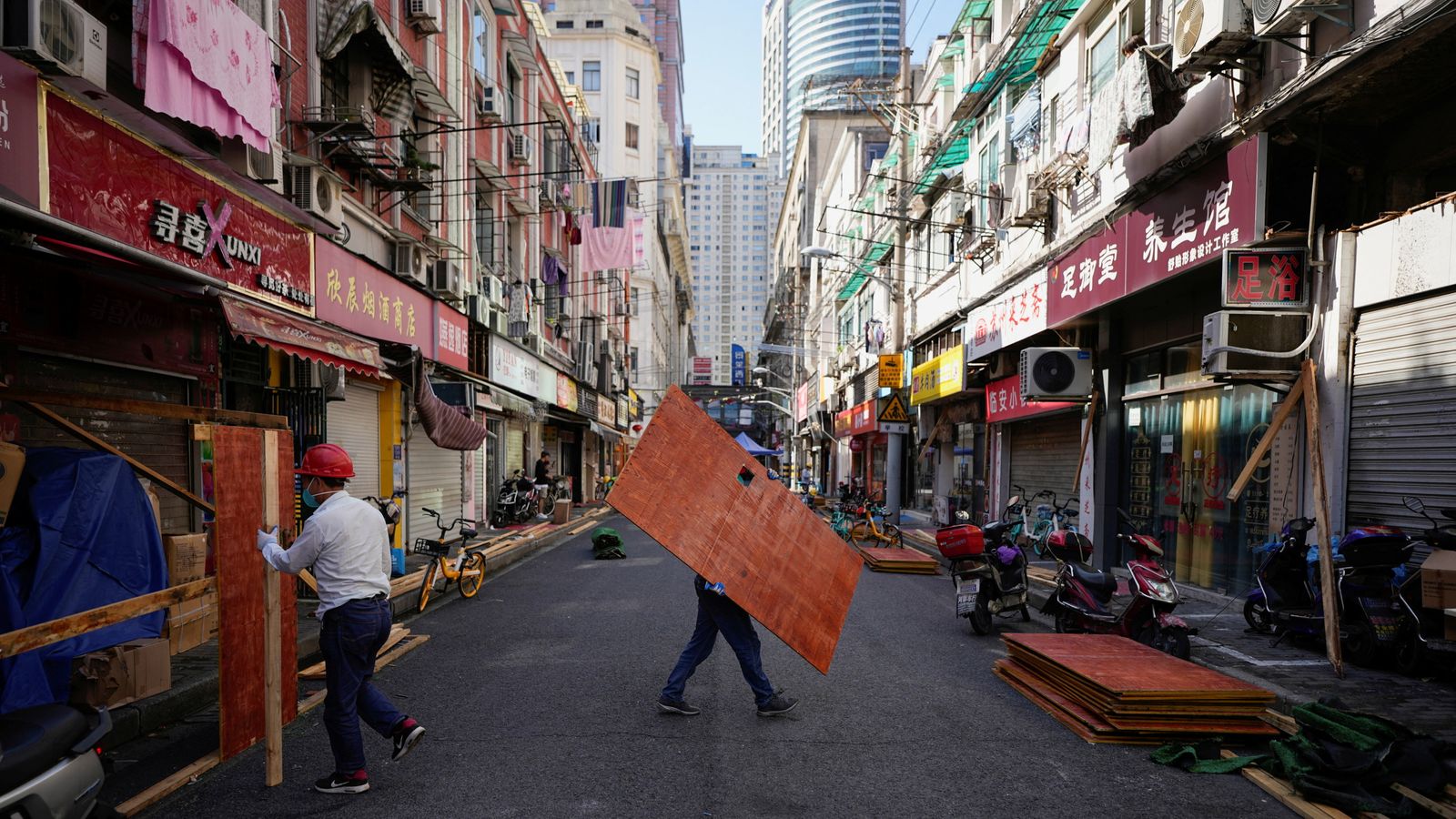Shanghai will begin to ease COVID-19 restrictions from midnight after two months in lockdown – longer than had been planned.
Authorities in China’s largest city have said the reopening will be carried out in stages, with people in low-risk areas having measures eased and being able to return to work from 1 June.
Full bus and subway services will be restored, as will basic rail connections with the rest of China.
Schools will partially reopen on a voluntary basis, while shopping centres, supermarkets, convenience stores and pharmacies will be able to open at no more than 75% capacity.
Cinemas and gyms, however, will remain closed for now.
People visiting public venues must also provide a negative PCR test to enter.
Deputy mayor Zong Ming said: “As long as risks of a rebound in infections are controlled, we will fully implement epidemic prevention and control, normalise management and fully restore normal production and life in the city.”
China has remained committed to its “zero COVID” goal of eliminating all outbreaks of the virus, but the repeated and stringent lockdowns have raised fears of the economy shrinking in the second quarter of the year.
Production and employment have been greatly impacted by the restrictions.
According to data from the National Bureau of Statistics, China’s industrial output fell 2.9% in April compared to 2021, dropping from a 5.0% increase in March, while retail sales in April reduced 11.1% after falling 3.5% in March.
Read more: Is China’s Shanghai lockdown an overreaction?
Economists warned that only abandoning “zero COVID” will give confidence to a sustained economic recovery.
“Shanghai’s phased-in reopening may only represent a respite rather than a turning point,” said experts at Nomura.
“The real turning point will be marked by a shift in China’s stance on its zero COVID strategy rather than headline COVID caseloads, the easing of some lockdowns or monthly activity data.”
The severe restrictions in China have not been in sync with the rest of the globe.
The capital city Beijing, which has a population of 22 million, has been finding dozens of new COVID cases every day since April despite its own tough measures – indicating how difficult it is to contain the highly transmissible Omicron variant.
China’s cabinet introduced a package of 33 measures last week to cover fiscal, financial, investment and industrial policies to revive the economy.

